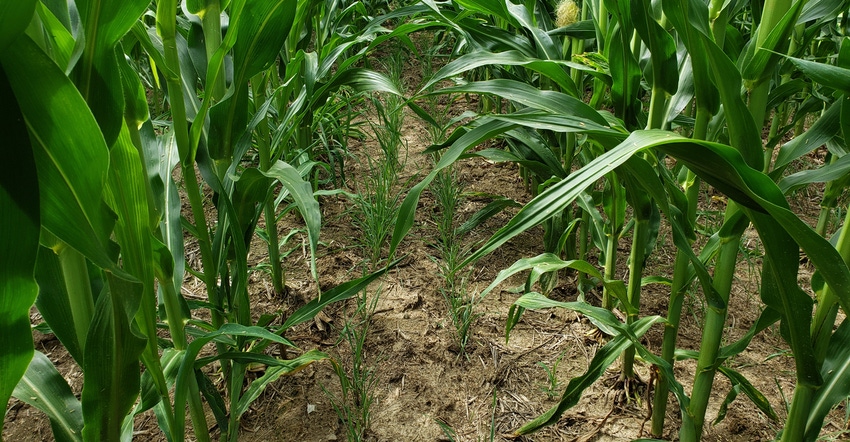August 14, 2020

Three relatively new practices a few growers are trying include relay cropping, wide-row corn and early interseeding of cover crops in corn. Some variations of these practices have been tried before.
Relay cropping is growing two crops at one time that usually mature at different rates. The typical relay cropping system tried in Indiana involves wheat and soybeans. Wheat is planted in the fall at the regular time, but the drill is set to leave a skip on 30-inch centers or, if possible, a winter-kill cover crop such as daikon radish is planted on 30-inch centers. The following spring, soybeans are planted in the skip, or where the winter-kill cover crops were planted.
Planting date is critical. You don’t want beans too tall at wheat harvest. Once wheat is harvested, beans have a head start over normal double-crop beans. The result is a wheat yield at least 50% of normal yield, with wheat stubble providing season-long weed control and a near-normal bean yield. Basically, the goal is one-and-a-half crops in one year.
Corn row width
Corn has been grown in a wide variety of widths. From check-row corn that allowed cultivation in two directions to 15-inch-row corn, many things have been tried. Some worked, and some didn’t.
The new kid on the block is taking corn row width back to 40 inches or even 60 inches with current planting populations. There are a couple of thoughts behind making corn rows wider. Research shows there’s some benefit to getting more sunlight into the corn row. High levels of sun on both sides of the row can result in bigger ears and a high-quality corn kernel resulting in high-yielding corn.
The second advantage allows growing season-long cover crops that are more successful than in narrow-row corn. Using legumes during the summer can provide nitrogen, while using multiple types of plants improves mycorrhizal fungi levels in the soil.
Interseeding covers
The time of the year paired with the time it takes to seed cover crops after corn harvest makes it difficult to seed lots of acres and get the desired fall growth. One seeding method being tested in Adams County by a group of 10 farmers is interseeding cover crops between V5 to V7 corn rows to spread the cover crop seeding window and improve fall growth of cover crops.
Each farmer committed to earlier interseeding a 5- to 20-acre plot. Each plot is split into half, with half the acres interseeded with straight cereal rye, and the other half with a mixture of cereal rye, spring oats, barley and oilseed radish.
These cool-season species germinate within a week of seeding, grow less than 12 inches, and then lay dormant during the peak heat of summer. Once temperatures lower in the fall, the species will actively grow again, providing a quality stand after harvest.
A yield comparison between the plot and the rest of the field will be completed postharvest to evaluate any effects on yield. Research completed by the University of Wisconsin and Penn State University shows there is no significant effect on (corn) yield.
Donovan and Musser are district conservationists with the Natural Resources Conservation Service. They write on behalf of the Indiana Conservation Partnership.
You May Also Like




